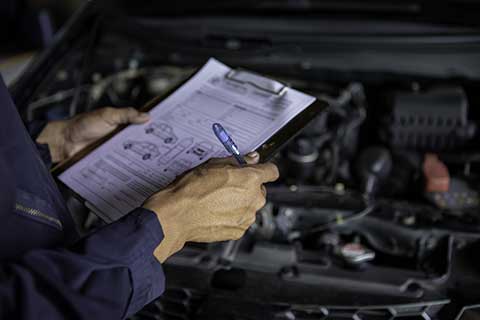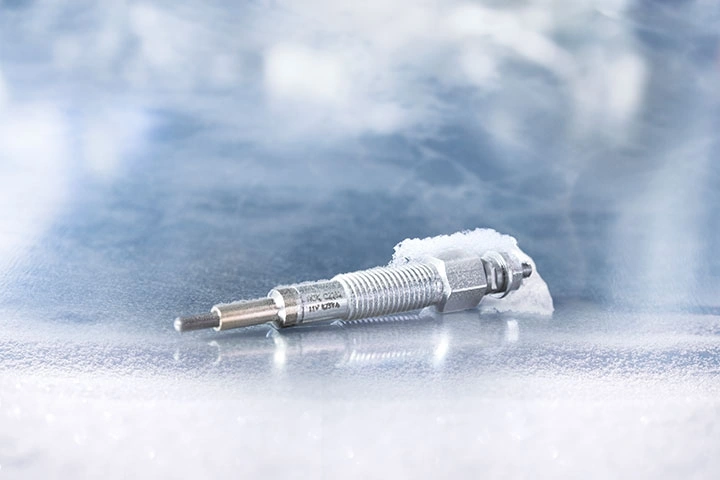'WELL DRIVEN' by James Ford: High-mileage buyers guide

Buying a high-mileage motor, however, doesn’t come without risk, which is why I have made a list of some of the key points to bear in mind when buying such a vehicle:

1. Service history
A car’s service history is by far the most important thing to check, regardless of its age and mileage – especially if, like me, you like to go for more prestige marques. The service history will show you how well the car has been maintained and inform you of any major mechanical maintenance that has been performed or may need to be carried out soon. If the history doesn’t stack up, make the smart decision look elsewhere.
2. Body condition
A car with a few more miles under its belt than the average will probably have a few scuffs and grazes, which is not necessarily a bad thing. If, however, the bonnet is caved in or the bumpers have huge holes in them etc., then, fair enough, you might want to start looking at other options. But if the overall condition of the car shows that it has been looked after properly, small battle scars shouldn’t put you off. In fact, for me, they represent pieces of character that show the car has been used as intended. Plus, a car’s bumps and scratches can provide the opportunity for some weekend hobby maintenance, not to mention strengthening your bargaining position when buying.
3. Preventative maintenance
One thing I have learnt over the years when it comes to buying prestige cars is that they often feature particular components or parts that are susceptible to failure. This means that carrying out adequate research before buying is of utmost importance. This can be done by looking on forums, asking other owners and spending some time finding out about the specifications and engine that you want. For example, my old Land Rover Discovery 3 was a 2007 model. Soon after I purchased it, I found out that all models built that year were fitted with a weak oil pump that could fail and kill the whole engine. Fortunately, I had a new pump fitted before anything bad happened, but it was still an added expense I didn’t really want after having just paid for the car.
4. Tyres and brakes
The tyres and brakes on a car can tell you a lot about how the car has been driven and how it has been looked after. If, for example, you’re looking at a performance vehicle that has been fitted with the cheapest ‘budget’ tyres and brakes, the odds are that this isn’t the only place where the previous owner has cut corners. These are not only early indicators of how well the car has been treated, but more importantly, are crucial to the vehicle’s safety. The same goes for the car’s brakes. Make sure there’s no juddering under braking or nasty grinding sounds. After all, you want your car to stop when it needs to.
5. Location
Vehicles regularly driven in more extreme climatic locations are more likely to suffer from rust issues. If, for example, you’re looking at a car that has spent most of its life by the seaside, it will have been exposed to a lot more salt water than most cars; salt water is a real car killer. The outside of the car may polish up beautifully but if it’s got bad rust underneath, it won’t be drivable for much longer. If you’re considering buying such a car, always make sure you can get underneath it and thoroughly inspect the arches, door sills as well as around the boot and bonnet. If the chassis has a nasty case of tin-rot, do not purchase.

6. Budget for repairs
Never assume buying an older car will be cheap. It may not cost a lot to buy up front, but there are always a multitude of things that may need to be fixed or replaced soon. You may get lucky but buying a high-mileage car is normally an expensive game, no matter how low the purchase price is. While the odd scrape here and there may play in your favour when it comes to haggling on the price, it’s probably best to hold on to this saved money for when something needs to be repaired in the future. Because the older cars get and the more miles they’ve travelled, the more likely they are to break. This is why used car dealers struggle to offer warranties on cars over 100,000 miles. My advice is to just be sensible and remember to factor in potential future costs when budgeting.
7. Get an inspection
If in doubt, seek professional advice. Independent vehicle inspections are easy to arrange and generally only cost a couple of hundred pounds, ultimately providing the potential buyer an accurate description of the car’s condition and more importantly, peace of mind. Most sellers are happy for you to have the car inspected, and if they’re not, it’s probably a red flag anyway. The great thing about these inspections is that they don’t only give you a professional opinion of the current state of the car, they can also look at parts that might need to be replaced soon; so to add to my point above, they can help with future budgeting as well as the initial purchase decision. Most specialist garages can offer this service as well as some of the major breakdown services.
8. Go with your gut
Finally, your gut instinct is something you should always listen to when buying a car. When I first got my driving licence, I made several heart-over-head decisions, which resulted in some hefty garage bills. I soon learnt, however, that the strange feeling you get in your stomach when you’re about to commit to something is not to be ignored. Because no matter how good the seller says the car is, or how reliable and cheap it is to run, or even if the history is impeccable and it looks like the best deal on the table, if your gut is saying something different, it’s probably best to listen to it. There’s no harm in walking away and spending more time looking for the right car, which will certainly pay dividends in the future.
There are plenty of great deals to be had for well-driven high mileage cars, so if you use your head and go in with a clear plan, you can drive away with a fantastic motor for a great price.
 Niterra Blogs
Niterra Blogs








